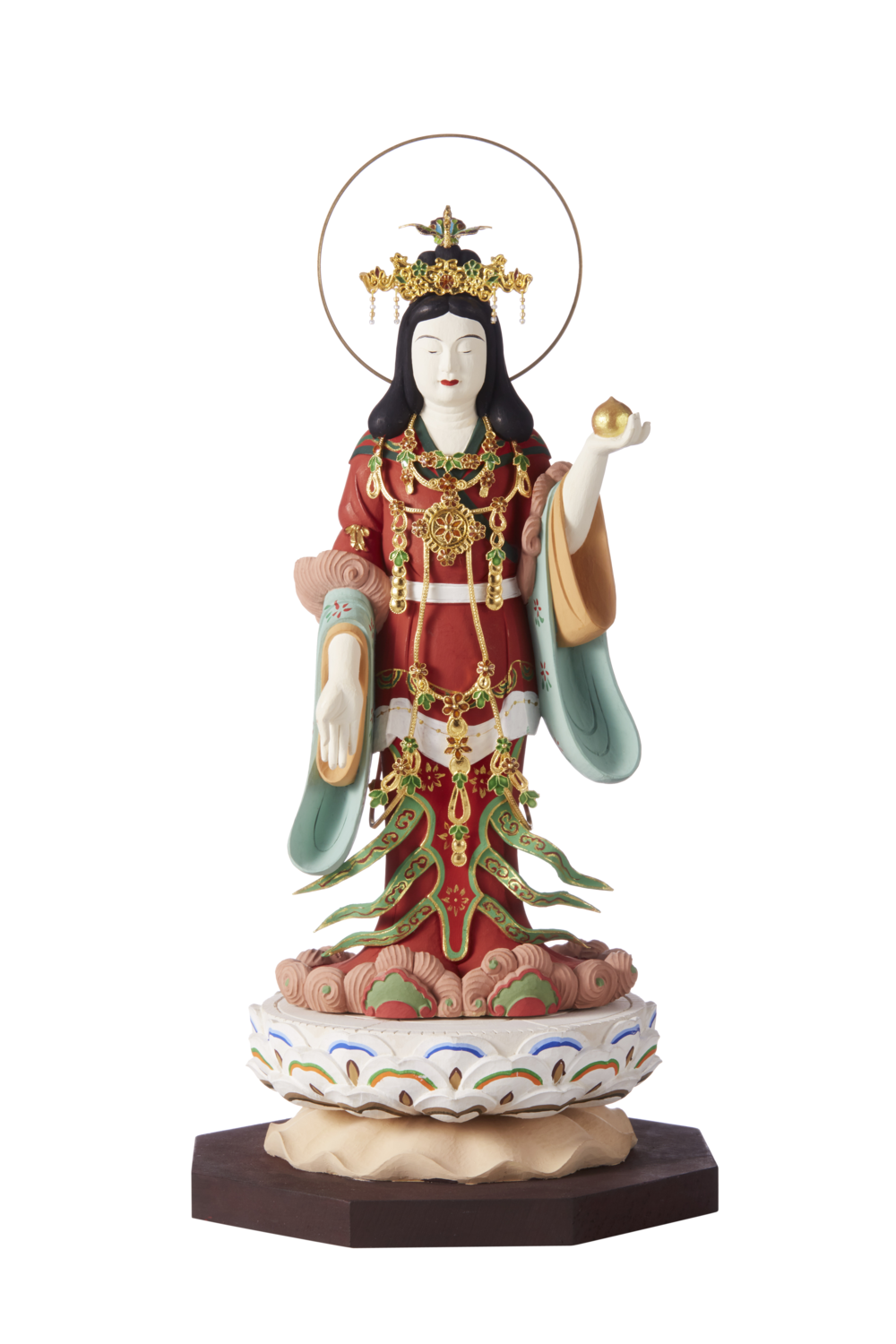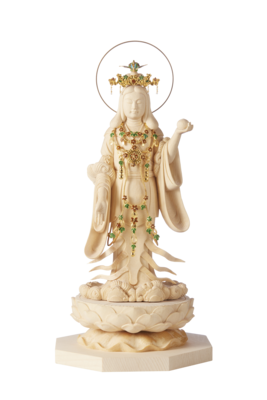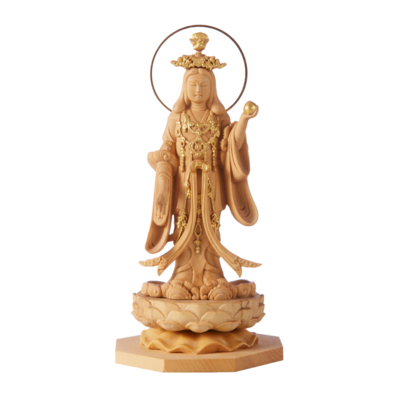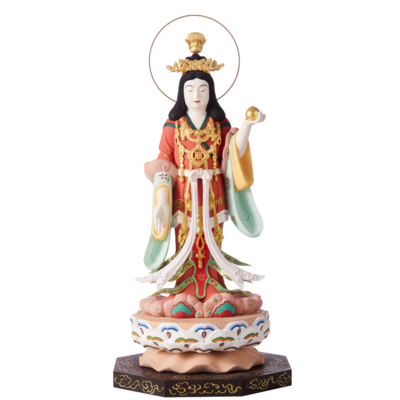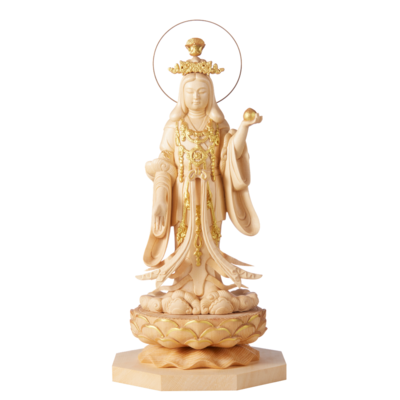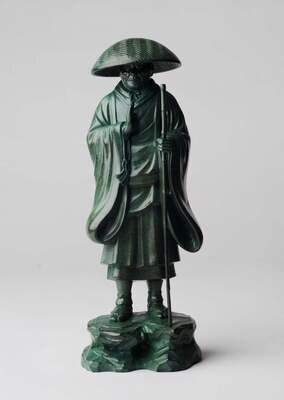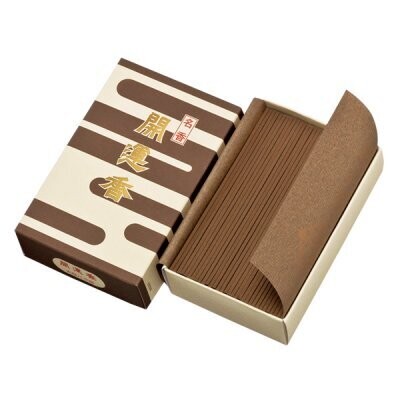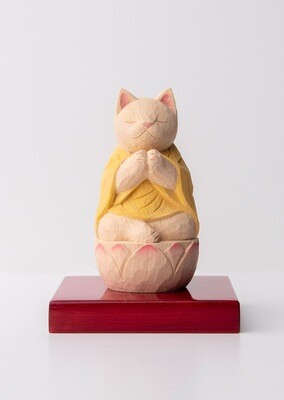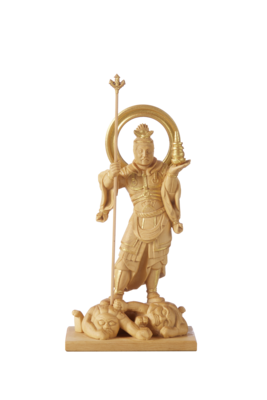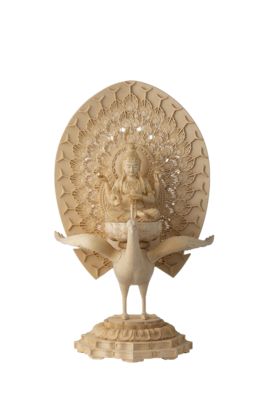Kissyo-ten (Shippo-yaki Style) (七宝焼吉祥天)
As the word kissho (auspicious) suggests, this is a goddess that represents prosperity and good fortune, and she is also revered as a symbol of beauty. Her dance is said to be an auspicious sign that brings abundant harvests and is still performed as the Gosechi no Mai dance at every ceremonial occasion in the palace. As the wife of Bishamonten, she protects the northern area as a family together with Zennishi Doji, the youngest of their five sons.
Shippo-yaki Kichijo-ten, also known as "Seven Treasures Glaze Prosperity Goddess," can be traced back to Japan's Heian period, spanning from 794 to 1185. During this era, culture and art thrived, and Buddhism was flourishing. Kichijo-ten, being a Buddhist goddess associated with bringing luck and prosperity, held significant importance for the people of this time.
Shippo-yaki Kichijo-ten is meticulously crafted by ceramic artists through manual labor. Its most distinctive feature is the beautiful coloring achieved using glazes known as "yūraku" (釉薬). These glazes are applied to the surface of the ceramics and, when fired, create exquisite colors and a brilliant sheen on the figurine of Kichijo-ten. A vivid and diverse range of colors, including red, green, blue, and yellow, are employed in the coloring process.
The figurine of Kichijo-ten is depicted as a beautiful female figure, typically accompanied by numerous treasures. She symbolizes wealth and prosperity and is revered as a sacred entity in Buddhism. Kichijo-ten is often portrayed adorned in traditional Japanese attire, such as a kimono and a jewel-studded crown, striking an elegant pose.
Shippo-yaki Kichijo-ten serves as an object of worship during religious festivals and in Buddhist temples. It is also highly esteemed as an art piece and is sought after for collections and as a gift item.
Due to its beauty and artistic value, Shippo-yaki Kichijo-ten receives acclaim both domestically and internationally. The graceful posture and vibrant ornamentation of Kichijo-ten epitomize Japan's traditional sense of beauty and artistic spirit.
In conclusion, Shippo-yaki Kichijo-ten is a magnificent ceramic art form that blends elements of Japan's history, culture, art, and Buddhism. Its beauty and intricacy make it an object of admiration, symbolizing the hopes and faith of those wishing for good fortune and prosperity.
- Size: H27.8×W14×D14 (cm), 380g
- Material: Hinoki (桧)
- Made in China
- You can choose the option to consecrate this statue (give an eye-opening ceremony) before it is shipped from Japan. If you choose this option, we will bring the statue to a Japanese temple, and pay them the necessary fees so that your statue is properly consecrated. The temple will issue a certificate of proof with your name on it, which will also be shipped together with your statue
- Shipped globally from Japan by using DHL. DHL is the world-class shipping services provider who makes international delivery a fast, smooth, and hassle-free experience. Delivery time can be faster than when shopping at an e-commerce website in your country, and of course your package will be covered by insurance. You can check the shipping cost for your entire order before you make a purchase
